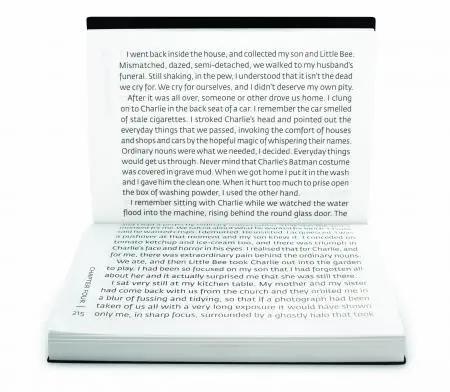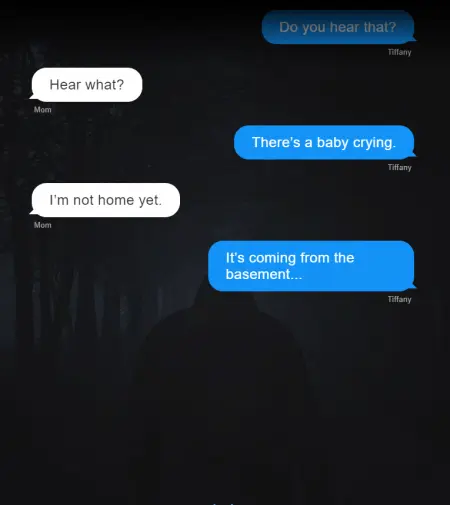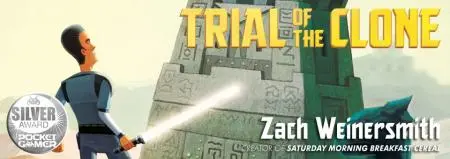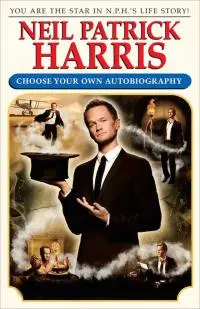There are two types of books in this world:
...uh, finish that with what you will.
There are two types of books in this world: electronic and print.
There are two types of books in this world: read and unread.
There are two types of books in this world: Ghost Dick, which I wrote, and all others (all others not being shameless plugs).
However you finish that statement, you’re wrong. There are way more than two types of books. In fact, there’s been a surge of new publication methods changing the format game.
Let’s take a look.
Serial Box
Serial Box is very “everything old is new again.” The idea of serializing was big back in the Gatsby days. But let’s dismiss the cynical side for a second. Cynical side, you’re dismissed. Why don’t you go outside and look at some flowers and think how pointless their lives are for a while? You like that kind of thing, right?
 Serial Box is releasing books in episodic format. Once a week, you get an “episode” of a story sent to you electronically, copying the way TV has traditionally been released.
Serial Box is releasing books in episodic format. Once a week, you get an “episode” of a story sent to you electronically, copying the way TV has traditionally been released.
Each episode has an estimated reading time of about 42 minutes, which is just a hair shorter than the average episode of your favorite 1-hour drama once commercials are tossed in for cars you can’t afford and companies that will insure the car you can’t afford, should you someday be able to afford it because you spent the night in a spooky mansion in order to collect an inheritance (I always thought that plot was stupid. Wouldn’t you rather inherit the cool, spooky mansion?).
Timed-out reading in show-length increments isn’t something most people think about. I first heard about it from bizarro lit luminary Carlton Mellick III, who said he wanted to write books that you could sit and read all in one shot, consuming them in a single experience the way you would a movie.
Serial Box’s stuff is written by teams. Most of us in the book world hiss and back away into a dark corner when we see an ampersand next to an author’s name, but maybe it’s time to be more open-minded about the idea. TV is certainly created by more than one writer, and it’ll be interesting to see where a writer’s room might take books.
You can choose to subscribe or get your entire “season” at once for binge-reading, too. It seems to me that binge-reading is basically normal reading, which defeats the point here, but to each his own.
For $1.59 access to weekly episodes in both text and audio formats, it’s pretty inexpensive and could be a lot of fun. There’s some utility here worth exploring if you’re running a book club or the more loose kind of book club where you and a friend read the same thing and then drink booze and talk about it (this is the only kind of book club worth its salt. Plus, you can use said salt in a tequila drinking ritual, the order of which I never get right).
Novelty or Next Big Thing?
I’m not totally sure that the weekly episode thing is working great for TV these days. On the other hand, one of the barriers to entry with books is the time commitment, and knowing the time commitment in advance might work in Serial Box’s favor.
This one is all going to depend on the content. Hey, if you can get Vince Gilligan to run a writer’s room and make one of these, you’re set. But if the content doesn’t become a hit with an audience, it’ll fizzle out. The format is a good idea, but it’s not enough to draw in big crowds on its own.
Dwarsliggers

These are relatively new to Americans, but they might be familiar if you’re overseas (and the above image is a Stephen King book from a few years back, but let's stay with the thread here). A Dutch printer is credited with starting the whole thing, making smartphone-sized books printed with special paper normally used for bibles, thin paper that’s still opaque. He kicked his press into gear in 2009, and since then he’s published some big names like Dan Brown and John le Carre.
The American side of the story is that teen bookthrob John Green saw some books printed in this style while overseas, and he was impressed with the quality of the bookmaking and surprised how readable they were despite being pretty small. Penguin worked with Green, and in the fall we’ll see some new editions of John Green’s hits in palm-sized, high-quality minis.
They’re small, they’re compact, but they’re still high quality and useful. They have a hinged spine, which lets the books lay open despite being so small, and Penguin worked hard to make An Abundance of Katherines, which has notes and charts and stuff, work in the small, landscape format. It’s not just a tiny book, it’s a very thoughtful, well-constructed book.
Novelty or Next Big Thing?
I guess I should have said “Next Small Thing.” But I’ll save that joke for your dad to use sometime.
The application here is obvious: A book that easily fits in a pocket, even a crappy pocket like the pocket on this one pair of jeans I bought from Amazon that definitely has pockets from girl pants. And I mean girl pants, not a woman’s pants. These pockets are too small to hold a damn pencil. If only we’d known, we could’ve rolled that 19th Amendment momentum into some pocket equality too.
Anyway, the thinking behind smartphone-sized books is pretty clear, but will it catch on with the audience?
It’s entirely possible. We’ve been seeing that younger generations really aren’t all that into electronic reading. John Green might be the perfect author to get an idea like this off the ground. He appeals to that print-hungry youngish generation, and his books make for pretty good reads in transit, on breaks, stuff like that.
And to be honest, I was totally suckered by a Moleskine-sized copy of Denis Johnson’s Jesus’ Son. I don’t get suckered often, but when I do, it’s by an adorable little book about a bunch of people who use way too many drugs.
Hooked: Stories Through Texts

With Hooked, you install an app and then read a story presented as a series of texts. The app’s layout mimics the look of an iPhone’s messaging app, and each time you tap the screen, a new text is displayed.
Hooked was downloaded over 20 million times. So there’s certainly interest in the idea,
Books have been written in the format of texts, of course, like Lauren Myracle’s TTYL, but Hooked seems to be a first as far as sending the narrative in text format based on a reader’s taps as opposed to printing texts into a book. It’s a big deal to be able to read a text-message-based book on the device you’d use to read text messages.
Of course, it’s also the perfect thing for a short attention span.
Novelty or Next Big Thing?
Here’s the opportunity being missed by Hooked: texts that build the narrative should come to your phone as texts, and they should come on a schedule, not when you enter the app and tap the screen. It’s sort of fascinating to consider the possibility of a text stream narrative, fictional messages popping in next to messages from your friends. “Friends” being Amazon shipment notifications, in my case.
There’s just something very appealing about crossing those streams, the real and the narrative, through a method of storytelling (text messaging) used almost exclusively for real-life application up to now.
Hooked isn’t quite there yet, and I think that’s going to hurt it. The stories are contained in a tidy app, waiting for you to pick them up, rather than barging into your life and demanding a little attention.
It’s also going to be a big challenge to create solid writing through texts only. It’s such a limited format, and creating a narrative where it feels like you’re peeking in, keeping up the illusion that this isn’t a created narrative, is going to be very difficult when dialog is your only tool. In this case, the format will heavily dictate the sort of content that's workable.
Augmented Reality
Think of this like Pokemon Go!, where you see objects existing in your world through a screen, but these objects are attached to a book. So you’re reading Harry Potter on a tablet, and then you hold it up and see a Voldemort in the sky Quidditching all over a Horcrux (I don’t totally remember how that series goes, you guys).
At my job, we did some of this with a NASA app that allowed folks to explore various space probes, the Mars Rover, things like that. You’d hit a button, and then if you held up an iPad, it looked as though the Rover was in the room with you. It gave you a sense of scale, and you could walk around the Rover and really check it out. It was very cool to “see” these objects in a real world context, and it was a great way to learn.
Novelty or Next Big Thing
I don’t know if I buy this one.
Okay, pretty solid application when it comes to education. If you could actually see the layout at Antietam (see, I don’t know about Harry Potter, but I know about The Civil War's bloodiest battle), that would probably help a lot of students. But that’s because the book, as an object, may not be the best vehicle for some types of information or for some types of learners. When it comes to reading, however, using books for reading as opposed to information delivery, I’m not convinced that AR is the future.
I heavily question the utility of having something presented to a reader versus the author’s work of describing the thing and the reader meeting the author halfway, creating their own image of it in the mind. I think this exchange and compromise between reader and text is really what makes reading an interesting and different pastime. Part of the “fun” of reading is imagining things. Using your brain to make a picture instead of letting a gizmo do it for you. Do I sound like enough of an old man yet? Should I talk more about Civil War battles?
The other thing is, at what point is the object no longer a book? If I’m looking at 3D models of sharks, am I reading or looking at 3D sharks? Don’t get me wrong, I’m down with looking at 3D sharks. But I’d be hard-pressed to do that for an afternoon and say I was “reading.” AR might be a thing we look to in the future, but I don't know if it's the future of reading.
![]() Choosing Your Own Adventure
Choosing Your Own Adventure
I wrote quite a bit about the shortcomings of these “children's” books where you’ll most likely meet a grisly end by being decapitated by a giant ant or decapitated in a rollover car accident or doing drugs. But the Choose Your Own Adventure approach has expanded into some new territories.
Neil Patrick Harris wrote his memoir in a CYOA style, even mimicking the cover art of the well-known series.
Ryan North wrote Romeo And/Or Juliet, which has branching paths and unlockable characters and storylines.
Chuck Palahniuk’s Invisible Monsters Remix had some of these elements too, being non-linear and not necessarily including the entirety of the text in a straight readthrough.
Novelty or Next Big Thing
The Choose Your Own Adventure idea isn’t anything new, but applying it to nostalgia-hungry adult books and non-fiction seem like different ways of looking at books.
These books have a big downfall, which is that they’re SUPER ANNOYING for those of us who are completionists. Maybe I go through Romeo And/Or Juliet and end up experiencing 10% of the pages. In order to get a more complete read, I have to do multiple readthroughs and retread a lot of territory I’ve already trod, and I’m already unhappy about that because I don’t like the word “trod.” It sounds like slang that mixes “turd” and “trot,” like you’re someone who takes dumps while walking upright without even slowing down.
I’d predict that the Choose Your Own Adventure format will mostly die in print, and while a few folks will carry the torch, it won’t be a big thing overall. But I also think this could be the emerging of an electronic selection of game-ified reads that would showcase some real benefits to the electronic format that haven't yet been fully explored.
OR HAVE THEY!?
Gameified Books

Zack Weinersmith, famous for his webcomic Saturday Morning Breakfast Cereal among other publications, or possibly famous for having a hilarious name (sorry, dude. You’re really great, but you’ve gotta admit, hilarious), put together Trial of the Clone, which is a book that functions through choices and contains RPG-like elements, even a system that includes random page turning as a substitute for dice rolls.
The book was fun on its own, but a company called Gamebook Adventures made the whole thing run on an iPad, automated the battle systems, and added voiceover by Wil Wheaton. There are additional achievements and art to unlock as well.
That's not the only book Gamebook Adventures have put out. They have a huge selection of titles and genres, all of which blur the lines between games and books in a way that a middle school Pete could only dream of. Alas, to finish stupid required reading through a video game that had a lot of jokes about clones murdering people. If only.
Novelty or Next Big Thing?
The electronic format might be a great thing for these types of reads. If an electronic format could create buttons to take me back to the place where I went wrong, an electronic finger between the pages of my last decision, that’d be pretty nice. They could even include some other features like interactive action sequences! And they could be about commandos! BIONIC commandos that you control! Wait, no. That’s a video game. They already have those. Roll that back a few steps.
That's the whole thing here, right? If Wil Wheaton is reading the book to me, and if I'm not keeping track of the battle systems...what do I get to do? I wanna do some stuff! That might just be me, Ol' Antietam Pete (I hope that one doesn't stick), but when I read a book, I like to do some of the work sometimes. When I play D&D, I don't like automation all that much. It just takes some of the fun out of it.
This type of interactive storytelling does more for me than the augmented reality type, but I'm wondering if increased accessibility and ease of use in video game creation software will put this sort of thing in the grave before long.
What do you guys think? Just variations on a theme, or groundbreaking mediums?
Get The Most Dangerous Game: A Saturday Morning Breakfast Cereal Collection at Amazon

About the author
Peter Derk lives, writes, and works in Colorado. Buy him a drink and he'll talk books all day. Buy him two and he'll be happy to tell you about the horrors of being responsible for a public restroom.
 Choosing Your Own Adventure
Choosing Your Own Adventure







